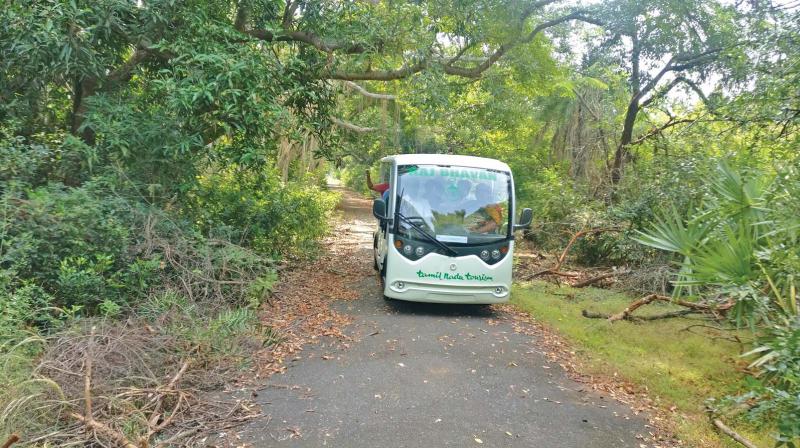Raj Bhavans need not be ivory towers
There are places of worship, including a temple and a mosque, that people can visit.

Motoring down the Sardar Patel Road at a clip past the IIT, the Gandhi Mandapam, memorial to Rajaji and others and then the Raj Bhavan you would never realise what a treasure trove of natural space abounds inside those compounds and behind the walls and fences. The lung space inside is just unbelievable. The Guindy national park is nearly 1,200 acres in its spread and houses the IIT Madras and the Raj Bhavan, besides the memorials, which we used to visit when in AC Tech since college was just across the road. It is a modern miracle that such space still exists, much of it pristine.
Playing cricket in the 70’s, we used to be surprised now and then by deer that would graze by the boundary, oblivious of the human action of chasing a leather ball taking place just yards away. In those halcyon days, they were never in threat of being considered anything other than a beautiful adornment of the national park, though they would often stray beyond and into the complicated world of man. Today, they couldn’t so much as cross the road without the risk of being mowed down by speeding motor cars.
It was by chance that I took the Raj Bhavan forest tour that the Governor so graciously offered media persons after treating us to a traditional idly-vadai breakfast. We were told that if we had the time we should not skip the tour. The serenity of nature inside a scrub forest even in generally dry Chennai was awesome to contemplate because just metres away was the honking very loud, world of Chennai traffic wherein each driver believes he has a right to a siren to clear the space in front of him.
Inside the national park, there is nary a sound except those of birds and the occasional rustling in the bushes that can still be heard as the electric tourist carts move on silent wheels through the dirt tracks. The Raj Bhavan, which allows people to visit the Governor’s residence for ’At Home’ events, is planning to take in visitors on conducted tours of the magnificent estate, including the scrub forest. The visits could start as early as next month and young people like school students may be on a priority list.
There are places of worship, including a temple and a mosque, that people can visit. While that is ongoing, the present Governor is making a sincere bid to run an open house where people would be welcome. The incumbent, Banwarilal Purohit, is no occupant of an ivory tower. His action in convening interactive sessions with officials in several districts has been drawing flak politically. It is, however, clear that the current Governor sees his duties, responsibilities and obligations under the Constitution in a different light.
The Governor’s sessions with administrators have been given a sinister twist by local opposition politicians who are attuned to seeing anything and everything as a threat to their large sphere of influence. Their monopoly on power is threatened by such innocent actions as a Governor wishing to get to know how schemes for public welfare are being administered and how they are progressing. And since most funds for these schemes come from the Centre, can there be any harm in a constitutional authority keeping a watchful eye and assess administrative efficiency as well as progress?
Governors have been known to play the role of a spy for the Centre in the old days when Section 356 would be used at the drop of a hat, including a couple of times in Tamil Nadu. Times have changed and President’s Rule has become the least desirable action in these contentious times when politics may be practised at a high pitch and yet must be accommodated because preserving democratic governance by elected governments is all too crucial. Extreme action from the national capital can come only when there is such political feuding in the states that providing a stable government becomes an impossible proposition.
In the existing vacuum in Tamil Nadu after the death of J. Jayalalithaa, a split within the ruling party has led to a situation in which a minority government is in place. In such a dynamc scenario, Governors have had a more active role to play. In fact, the previous Governor did the wisest thing in delaying his call on inviting Ms Sasikala to be the CM as the state was likely to be embarrassed by a second successive CM who would have had to go to jail for graft in the middle of a term. By declining to take a call just on a ruling party whim and stubbornly waiting for the supreme Court verdict, Mr Vidyasagar Rao had saved the state. There is no harm then in seeing active Governors sit in the magnificent Raj Bhavans.

